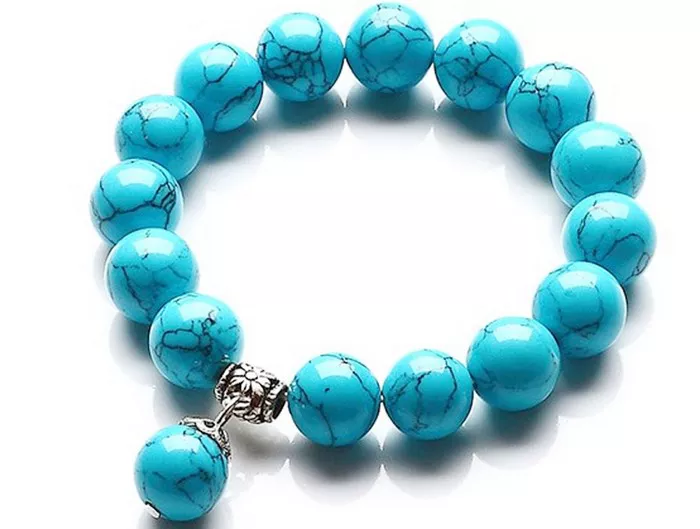Turquoise is a captivating gemstone known for its vibrant blue-green color and rich cultural history. Revered by ancient civilizations such as the Egyptians, Persians, and Native Americans, turquoise has been prized for its beauty and spiritual significance for thousands of years. Today, turquoise remains a popular choice for jewelry, home décor, and artwork, but many people wonder about its cost and value. In this article, we will explore the factors that influence the price of turquoise and how its value is determined in the market.
Understanding Turquoise
Turquoise is a hydrated phosphate mineral that belongs to the family of copper minerals. Its distinctive blue-green color is created by the presence of copper and iron within the crystal structure, along with traces of other minerals such as aluminum and phosphorus. Turquoise forms in arid regions where groundwater interacts with copper deposits, resulting in the formation of turquoise-bearing veins and nodules.
Turquoise has been cherished by cultures around the world for its unique beauty and spiritual properties. In many Native American traditions, turquoise is considered a sacred stone that symbolizes wisdom, protection, and healing. The ancient Egyptians prized turquoise for its association with the goddess Hathor and its protective qualities, while the Persians believed that turquoise could ward off evil and bring good fortune.
Factors Affecting the Price of Turquoise
Several factors influence the price of turquoise, including the following:
Color: The color of turquoise is one of the most important factors in determining its price. High-quality turquoise typically exhibits a vibrant blue-green color with minimal matrix or veining. Stones with a pure, intense hue are considered more valuable than those with a lighter or more subdued color. Turquoise with a deep, rich blue color is particularly prized and commands a higher price in the market.
Quality: The overall quality of the turquoise, including factors such as clarity, transparency, and hardness, also affects its price. High-quality turquoise should have a clear and transparent appearance, with minimal to no visible inclusions or imperfections. Stones with a smooth, polished surface and a uniform texture are considered more valuable than those with rough or uneven surfaces.
Origin: The origin of the turquoise can significantly impact its price and value. Turquoise from certain locations, such as the Sleeping Beauty mine in Arizona or the Nishapur region in Iran, is highly prized for its exceptional color and quality. Turquoise from these renowned sources commands a premium price in the market due to its rarity and desirability.
Size and Shape: The size and shape of the turquoise also play a role in determining its price. Larger stones are generally more valuable than smaller ones, as they are less common and can be more challenging to find. Additionally, turquoise that has been cut and polished into unique shapes or cabochons may command a higher price due to its artistic appeal and craftsmanship.
Treatment: Some turquoise may undergo treatment to enhance its color, stability, or durability. Common treatments for turquoise include stabilization with resin or wax and dyeing to enhance or alter its color. While treated turquoise can still be beautiful and valuable, untreated stones are often considered more desirable and may command a higher price in the market.
How Expensive is Turquoise?
The price of turquoise can vary widely depending on factors such as color, quality, origin, size, and treatment. Here is a general price range for turquoise based on these factors:
Low-Grade Turquoise: Low-grade turquoise, which may have a pale or uneven color, visible matrix or veining, and poor clarity, is typically the least expensive type of turquoise available. Low-grade turquoise is often used in mass-produced jewelry and can be relatively affordable, with prices ranging from a few dollars per carat to several tens of dollars per carat.
Mid-Grade Turquoise: Mid-grade turquoise, which exhibits a more vibrant color, minimal matrix or veining, and better clarity, is considered a step up in quality and price. Mid-grade turquoise is commonly used in artisanal jewelry and may range in price from several tens of dollars per carat to several hundred dollars per carat, depending on factors such as origin and size.
High-Grade Turquoise: High-grade turquoise, which has a rich, intense color, minimal matrix or veining, excellent clarity, and desirable origin, is the most valuable type of turquoise available. High-grade turquoise is often used in fine jewelry and collector’s pieces and can command premium prices in the market. Prices for high-grade turquoise may range from several hundred dollars per carat to several thousand dollars per carat or more, depending on factors such as rarity and demand.
Collector’s Turquoise: Collector’s turquoise, which is rare, exceptional, and highly prized by collectors and connoisseurs, can command the highest prices in the market. Collector’s turquoise may come from renowned sources such as the Sleeping Beauty mine in Arizona or feature unique characteristics such as unusual color or exceptional clarity. Prices for collector’s turquoise can vary widely and may reach tens of thousands of dollars per carat for the rarest and most valuable specimens.
Conclusion
Turquoise is a captivating gemstone with a rich history and cultural significance. While the price of turquoise can vary widely depending on factors such as color, quality, origin, size, and treatment, it is generally considered to be more affordable than other gemstones such as diamonds or emeralds. Whether you’re looking for a budget-friendly option or a rare collector’s piece, there is a wide range of turquoise available to suit every taste and budget. By understanding the factors that influence the price of turquoise and knowing what to look for when purchasing, you can make informed decisions and enjoy the timeless beauty and allure of this beloved gemstone.


